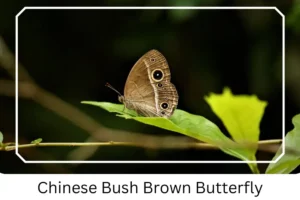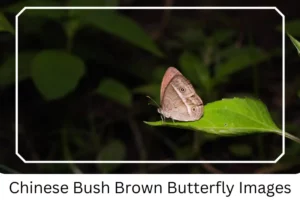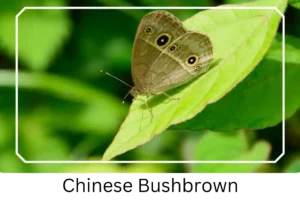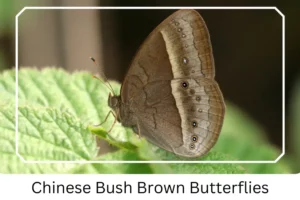Chinese Bush Brown (Mycalesis gotama)
The Chinese Bush Brown butterfly, a member of the ‘satyrine’ group, is a fascinating creature known for its brown coloration which mimics the appearance of dead leaves. This natural camouflage aids in its survival, making it a master of disguise in its forest habitat. Despite their elusive nature, understanding the characteristics and behaviors of the Chinese Bush Brown can offer a glimpse into the complex interplay between species and their environments.
Scientific Classification
- Family: Nymphalidae
- Genus: Mycalesis
- Scientific Name: Mycalesis gotama
Overview
Belonging to the Mycalesis genus, the Chinese Bush Brown butterfly is a testament to the adaptability and diversity of butterflies. Their presence across various Asian countries highlights the species’ adaptability to different forest ecosystems. Observing these butterflies offers insights into the ecological balance of forests and the importance of conservation efforts to protect such intricate life forms.
Description and Identification
Caterpillar
The larvae of the Chinese Bush Brown butterfly are nocturnal, featuring greenish or brownish hues with thin dorsal and lateral stripes. This coloration allows them to blend seamlessly into the foliage, avoiding predators under the cover of night.
Pupa
Adopting a strategy of inconspicuousness, the chrysalis ranges from pale green to light brown. It hangs underneath the leaves, stalks, or stems of host plants, making it difficult for predators to spot.
Adult Butterfly
Sexual Dimorphism: Not present. Both sexes display similar size and coloration, making it challenging to distinguish between males and females based on appearance alone.
Color and Appearance: The adult Chinese Bush Brown showcases a brown coloration with a series of eyespots on the open wings, enhancing its camouflage among the forest’s dead leaves. The underside of the wings features a single straight median line when closed, further aiding in its disguise.
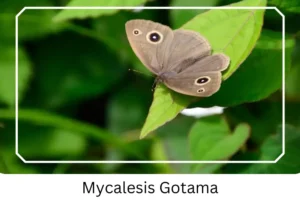
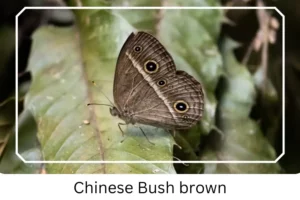 Average Wingspan: Ranges from 45 to 60 mm, a size that allows for efficient, low-level flight.
Average Wingspan: Ranges from 45 to 60 mm, a size that allows for efficient, low-level flight.
Flight Pattern: These butterflies fly infrequently and remain close to the ground, maneuvering through their habitat with agility.
Eggs
The eggs are pale white and laid on the leaves of the host plant, blending in with their surroundings to protect them from potential threats.
Quick Facts | |
| Distribution | East and northeast India, Myanmar, Cambodia, Vietnam, West Malaysia, Thailand, Laos, south China, Taiwan, and Japan. |
| Habitat | Found primarily in rainforests and deciduous forests, especially in small glades and along logging roads. |
| Host Plants | Prefers Bambusa, and various grasses such as Miscanthus, Setaria, Isachne, and Oryza. |
| Adult Diet | Primarily feeds on flower nectar. |
How to Identify Chinese Bush Brown?
Identifying the Chinese Bush Brown butterfly involves looking for its distinctive brown coloration and the unique pattern of eyespots on its wings. These eyespots are crucial for its survival, as they mimic the appearance of a predator’s eyes, deterring potential threats. When observing these butterflies in their natural habitat, notice their flight pattern; they tend to fly low and rarely venture high above the ground. Their preference for flying in small glades and along logging roads within forests can also aid in spotting them. Additionally, the larvae and pupae exhibit specific characteristics, such as the greenish or brownish color of the larvae and the pale green to light brown chrysalis, which can provide clues to identifying the Chinese Bush Brown at different life stages.
Did You Know?
- The caterpillar’s face is often likened to the popular fictional character ‘Hello Kitty’, due to its unique facial markings and shape.
- The Chinese Bush Brown has a remarkable ability to adapt its coloration during seasonal changes, which helps it blend into the changing environments throughout the year.
Conclusion
The Chinese Bush Brown butterfly is not just another species; it embodies the incredible adaptability and resilience of nature. Its life cycle, from the camouflaged caterpillar to the discreetly beautiful adult, showcases the wonders of natural selection and adaptation. Observing and studying this butterfly not only enriches our understanding of the biodiversity of our planet but also emphasizes the need for conservation efforts to protect these delicate ecosystems and their inhabitants.

